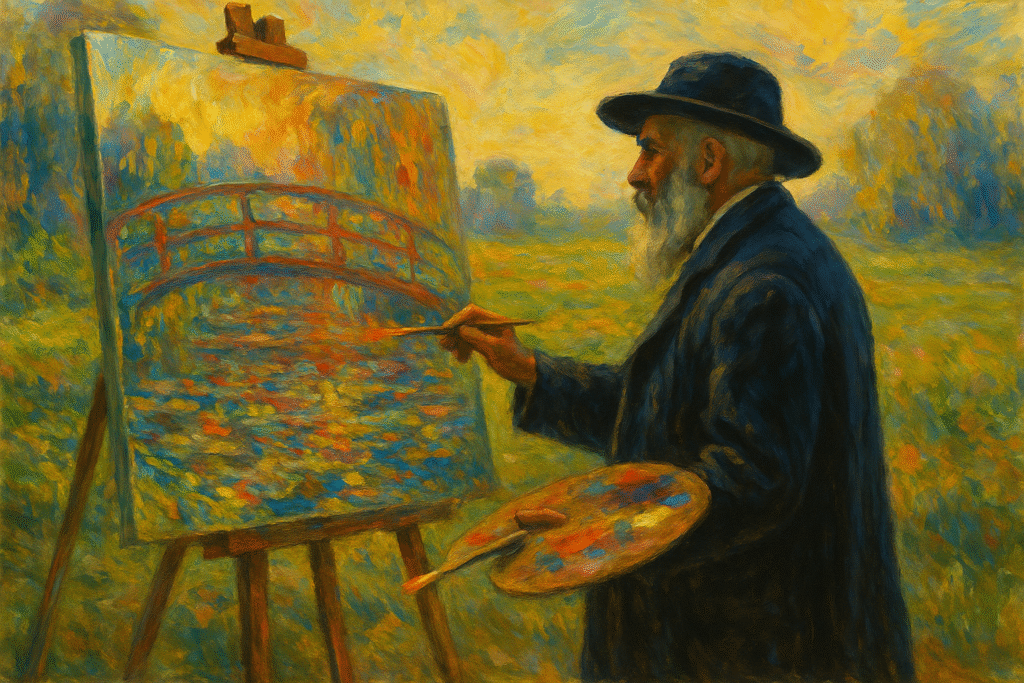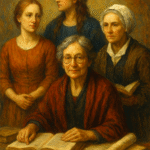Introduction
Claude Monet, a cornerstone of the Impressionist movement, experienced a significant shift in his artistic style due to failing eyesight caused by cataracts. This article explores the profound impact of Monet’s cataracts on his artistic output and how it shaped Impressionism itself. We’ll delve into the biological impact of cataracts on Monet’s vision, the stylistic changes in his work, and the broader implications for the Impressionist movement, including expert commentary on the intersection of vision and art. Furthermore, we will take a closer look at case studies of his paintings, the emotions intertwined with his later works, and practical applications for artists facing similar challenges.
Monet’s Life, Career, and Cataracts
Born in Paris in 1840, Monet’s artistic journey began in Le Havre, where he developed a passion for art at a young age. Monet’s breakthrough came in the 1860s when he, alongside contemporaries like Renoir and Pissarro, formed the Impressionist movement, named after his painting _Impression, Sunrise_. This group aimed to capture light and its interplay with nature, often painting en plein air (outdoors).
However, Monet’s career took an unexpected turn when he began suffering from cataracts, a common condition with adverse effects on vision. His cataracts, which started affecting him in the late 19th century, intensified significantly between 1912 and 1922, becoming a major obstacle in his artistic journey. At first, the condition was subtle, leading to some visual discomfort. Yet as it progressed, Monet found his ability to perceive colors and details drastically altered. It was during this period that he created masterpieces such as the _Water Lilies_ series, showcasing a significant evolution in his technique and approach to painting.
Cataracts and Artistic Transformation
Biological Impacts and Visual Distortion
Cataracts cloud the eye’s lens, leading to blurred vision and challenges in color perception. For Monet, the world became increasingly yellowed and distorted. As he painted, he grappled with views that were softer, less defined, and devoid of clarity. The intricacies of his earlier works, which displayed meticulous attention to detail, gave way to broader strokes and bolder palettes in his late pieces, indicating a response to these changes.
From a biological standpoint, cataracts can affect contrast sensitivity and depth perception, both vital elements for a realistic portrayal of landscapes. The struggle with these visual distortions is poignantly documented in Monet’s later work, particularly in paintings like _The Japanese Bridge_. Color palettes became more vibrant, potentially reflecting Monet’s struggle to differentiate colors through the fog of cataracts. This blending of colors, combined with the softening of structures within his paintings, signified his adaptation to the impairment.
Stylistic Changes: Embracing Abstraction
Monet’s later works are characterized by an embrace of abstraction that can be traced back to his vision problems. In pieces such as _The Japanese Bridge_ and the _Water Lilies (The Pond)_ series, details are overshadowed by spontaneous brushwork and emotional resonance rather than accurate representation. His brush strokes became more fluid, conveying a sense of movement and light rather than focusing on the minutiae of his surroundings.
This embrace of abstraction was not merely a consequence of his cataracts but rather a profound reflection of his inner emotional landscape. Art historian Dr. André Rouillé articulates this shift, stating, “Monet’s later works challenge the viewer to connect with the essence of nature rather than its form, transforming visual disability into an emotional dialogue with the landscape.” The abstraction allowed Monet to express not only his visual experience but also the profound emotion he felt towards the subjects he painted.
Impact on Impressionism and Beyond
Monet’s experience with cataracts had a lasting impact on the Impressionist movement and the art world at large. His abandonment of detail in place of emotional abstraction significantly influenced fellow Impressionists, inspiring them to explore new means of representation. This shift paved the way for Post-Impressionism, impacting artists such as Vincent van Gogh and Paul Cézanne. These artists adopted and expanded upon Monet’s exploration of emotional resonance and color theory, emphasizing personal perception over external reality.
A notable example of this influence can be seen in Van Gogh’s works, where emotion and brushstroke merge to form new realities, much like Monet’s later style. Monet’s adaptation highlighted how limitations could fuel creative growth, pushing artists toward innovative practices that question the role of perception in art.
Expert Commentary
Art historians, such as Dr. Richard Shiff, highlight that Monet’s cataracts didn’t merely hinder but allowed a new avenue for artistic exploration. In a recent lecture, Shiff remarked, “Monet’s later works are an echo of the human experience — they are less about seeing and more about feeling; an intrinsic link between human emotion and nature.” Contemporary artists and art therapists also affirm this sentiment. Dr. Linda Gustafson notes, “Personal struggles in art can lead to profound discoveries in form and expression. Monet’s cataracts transformed not only his vision but opened new realms of visual poetry.” These expert insights illuminate the resilience and relentless pursuit of creativity in the face of adversity.
Practical Applications: Connecting Vision to Artistic Expression
Monet’s story provides invaluable lessons for contemporary artists. For visual artists who face health challenges, Monet’s journey demonstrates that limitations can be reframed as opportunities for innovation. Exploring alternative methods and adapting techniques can lead to fresh avenues of creativity.
Step-by-Step Embracement of Change
1. Acknowledgment: Recognize the limitations imposed by vision impairments or any health issues. Understanding the condition allows artists to move forward positively.
2. Experimentation: Encourage exploration of various mediums and styles. Monet transitioned towards broader brush strokes and vibrant colors; similarly, artists can adapt their approach to suit their vision changes.
3. Emotional Connection: Go beyond visual representation. Consider the emotional themes behind the artwork and how personal experiences could influence the creative process.
4. Community Support: Engage with peer artists, art historians, and mentors to share experiences and inspirations. Monet was part of a vibrant artist community, which fostered artistic growth.
5. Reflection and Evolution: Regularly revisit past works to assess progress and evolution in style. Assess how personal experiences are reflected in the art created.
Conclusion and Summary
Monet’s journey illustrates the transformative power of personal challenges. His cataracts, while a hindrance, became a catalyst for artistic innovation, reshaping Impressionism and leaving a lasting legacy on the art world. By adapting to his failing eyesight, Monet not only expanded the possibilities within his work but also shaped the narrative of art for future generations. The intersection of vision and art, as demonstrated by Monet, reminds artists and enthusiasts alike that creativity can flourish even amidst adversity.
FAQ
Q1: How did Monet’s cataracts affect his paintings?
A1: They caused blurriness and color distortion, leading to softer edges, vibrant colors, and a shift towards abstraction.
Q2: Did cataracts affect other Impressionists similarly?
A2: Monet’s experience was unique, but many artists faced health challenges that shaped their work. His adaptation notably pushed Impressionism towards abstraction.
Q3: Can cataracts lead to more abstract art?
A3: While not definitively proven, Monet and others demonstrate how visual impairment can inspire abstract interpretations.
Q4: How does Monet’s experience relate to health and creativity?
A4: It shows how struggles can fuel artistic innovation and lead to groundbreaking movements.
Q5: What can we learn from Monet’s adaptation?
A5: Challenges can be opportunities for growth. Embrace limitations as catalysts for creative evolution.
Q6: Are there contemporary artists who faced similar challenges?
A6: Yes, numerous artists throughout history have faced physical challenges, such as Matisse and Frida Kahlo, using their experiences to inform their artistic practices.
Q7: How can budding artists develop their style despite obstacles?
A7: By acknowledging their challenges, experimenting with new methods, focusing on emotional expression, and connecting with supportive communities, artists can develop unique styles that resonate with their lived experiences.


